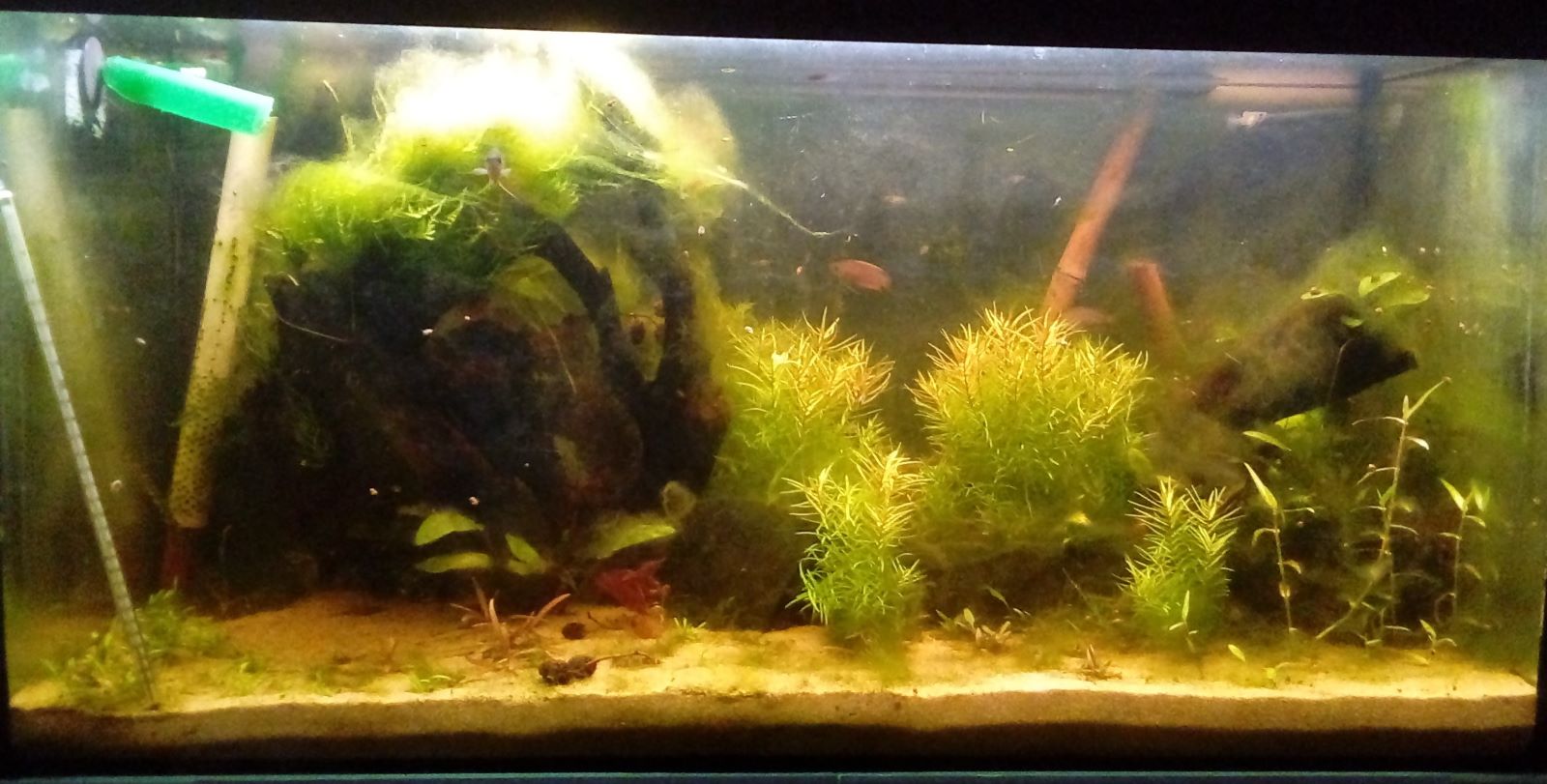It’s time to check in with Avalus to see what’s up in the new aquarium.
Part 4 – Technically Challenged
You could see it in the last part of Full Fish ahead: I modified the filter inlet tubing. Today I want to talk about what I did and why.
A word of warning: When playing around with water, make sure you have no non-water safe electrical McGuffins running in the splash zone and test, extensively, if your seals are really waterproof (for example overnight in a box).

As you can see, I have a darker background. It is an old towel and will be replaced later on by paper. ©Avalus, all rights reserved
A darker background helps to calm shyer fish and lets their colours stand out. I also cut some of the plants in the middle (Didiplis diandra) to give the other plants between space and light (Hygrophilia Araguaia and cryptocoryne wenditii).
The filter comes with 16 mm hose and an inlet piece that fits the hose. The Problem with this is threefold. One, the Inlet has few large openings, small fish and especially shrimp will get sucked in the filter. It also congests really quickly. Then, just behind the inlet, the water flow is choked and because of the small diameter there is much resistance from the walls, resulting in higher strain in the pump. Also the hose really quickly plugs up from particles sticking to the walls and bacterial mats that will grow. [Read more…]






